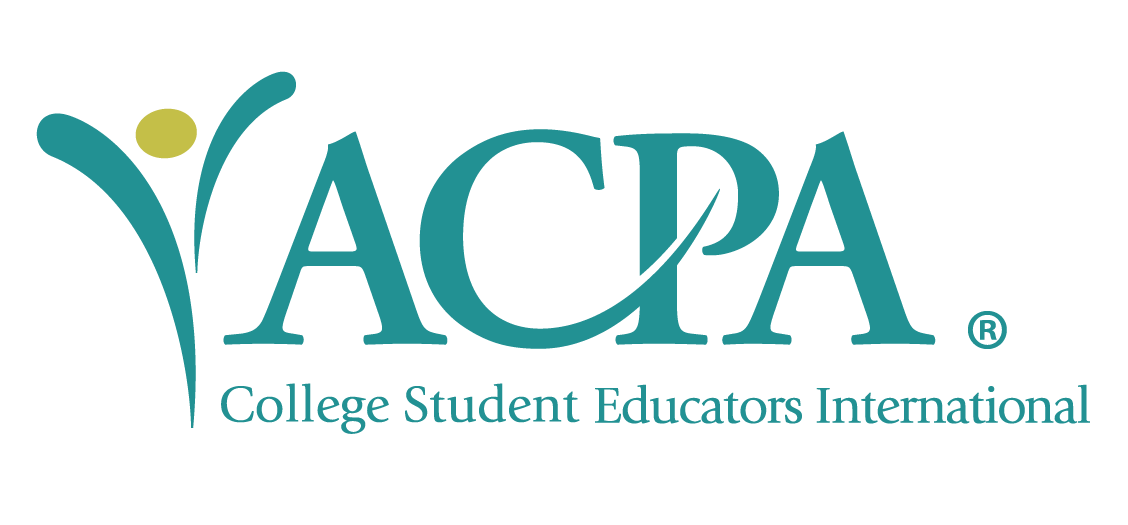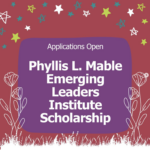
How Technology Could Impact the Future of International Education (Part II)?- With Hanna Lee
Description: This is the second episode of our discussion on technology and international education. Today we are continuing to introduce the trending technology in student affairs and international education. We will discuss how to stand out at the age of technology and how to start getting familiar with educational technology for our jobs in higher education.
#23-How Technology Could Impact the Future of International Education (Part II)?- With Hanna Lee
SUMMARY KEYWORDS
Blockchain, technology, documents, universities, AI, immigration, tool, work, record, job, international students, international, education, visa status, crypto, learning
SPEAKERS
Hanna Lee, Lixing Li
Lixing Li 00:00
Hello everyone, welcome back to our channel I am your host Lixing with our old friend Hanna here today, we’re going to continue our last discussion on technology and international education. Particularly, we will focus on how to stand out as a student affair professional in the age of AI technology. We highly suggest you check out our last episode if you have not done yet to get more context about our discussion. Hanna welcome back!
Hanna Lee 00:27
Hi Lixing Hello, everyone. I would like to welcome returning listeners, especially if they’re any. I’m glad that the last episode did not scare you or make you overwhelmed. We discussed AI and variables in our last episode.
Today I’m going to continue sharing my thoughts on how blockchain and NFT could impact international education from the immigration regulation standpoint.
First, we’ll start off by looking at the blockchain and NFT. Blockchain and NFT are something that I personally believe could change my role as a DSO, aka International Student Advisor a lot in many positive ways. At the same time, it’s something that will take more time for us to really implement the technology, in our work than any other new technology like AI or metaverse. I’m not an expert on blockchain or NFT. As a disclaimer, just to put a disclaimer out there, I just have a basic concept of what it is and how it can be used, used in our daily view daily lives.
Let’s start with Blockchain. To put it very simply, my understanding of blockchain is that it can store information that cannot be easily edited or updated.
Let’s say Walmart might use blockchain to track where its vegetable is from. And if there’s a recall, they can check all the vegetables from the same farm, which is great for risk management.
Can you imagine how this can be used for International Education? Let me give you more context on how blockchain technology can be useful for International Education. Although it’s a university it has its own admission requirement, usually, international applicants are required to submit English proficiency scores and high school transcripts. Some applicants who really want to study abroad in the US or like to be eligible for higher scholarships might fake their GPA or English proficiency scores.
If the information is stored in blockchain, admissions officers will not have to worry about the validity of the documents as students cannot fake them. For example, big agricultural companies have already adopted blockchain technology to keep track of supply chains safer and most efficiently to not lose fruits, vegetables, or cow information and possibly save more than $100 billion in annual food waste.
In addition, when international student is admitted, they need to provide a scanned copy of their passports and financial documents to be issued immigration documents form I-20. And issuing Form I-20 is one of my primary responsibilities. Before the pandemic, we had to mail this document out physically, and if there was any typo or error, or if the student lost it, we had to print another one and mail it again they ship it again, which could cost more than $100, depending on the destination, then they need to submit I-94 arrival or departure record and bring these documents whenever they go unless they go to the grocery store near the campus. This is because they can be questioned by Customs and Border Protection officers about their visa status. So okay, I will stop here. You’re not here to listen to what ISSS does every day.
But what you can take away is all the documents that I just listed, like the English proficiency passport, I-20, and I-94. Everything can be encrypted. In doing so the risk of validating the authenticity of the document will significantly decrease.
What is more, with the blockchain, students do not need to bring a physical copy of the document to prove their visa status. Likewise, personal records like the I-94 arrival and departure records can be stored in students’ blockchains as blockchains work as a digital footprint, this can prevent their I-20 from being terminated just because they did not provide any document just like what happened at some universities for not providing I-94 records.
Hanna Lee 05:16
Okay, now we’ll move on to NFT. NFT stands for nonfungible tokens and it is a cryptographic asset based on blockchain technology. And one of its unique characteristics is that it is a decentralized record. I’m not an NFT expert either, so I’ll briefly touch upon how NFT can be used for international education record-keeping purposes.
Currently, immigration records like form I-20s for F1 students are managed by the home university. And students need to go through the transfer process like submitting an acceptance letter or providing the transferring and verification form to move the immigration record when they plan to transfer to different US colleges and universities.
However, if NFT is something that universities and colleges start to use, maybe releasing the student’s record to the new school may not be necessary. And the transfer process can be simplified because NFT is a decentralized record.
Lixing Li 06:22
I love this piece. And I really like the part that universities do not need to worry about verifying the documents with the help of the blockchain. It might also simplify our immigration check-in for incoming International Students love that right.
Hanna Lee 06:36
Yeah. So we might see how things will be simplified in the future. I don’t know if that will happen in five years or 10 years, but it’s the whole purpose of this podcast is to just throw some question marks out there.
Will the current immigration regulators’ regulations look the same in five years, or 10 years, based on how fast technology is getting developed? So that’s my one question work today. So next, we’re going to talk about cryptocurrency and international education.
Hanna Lee 07:09
Cryptocurrency like Bitcoin is something that does not need further explanation and has been around us for the longest time almost with technologists that we discuss today. However, it wasn’t until recently that higher education in the US started to accept this cryptocurrency. For instance, Pennsylvania University was the first one among Ivy League to receive around $5 million worth of coins as a donation back in May of 2021. Since then, more and more schools made it available to donors to donate digitally, as the value of coins fluctuates more than traditional dollars. Colleges and universities tend to withdraw the crypto right after they receive the donation and deposit it into their account in USD.
In the future maybe there might be international students who provide crypto financial documents instead of traditional bank statements. And institutions would need to equip themselves with confirming the currency of crypto to USD or vice versa before they issue immigration documents for international students.
Another topic that is related to cryptocurrency and immigration rules is employment authorization. Currently, international students need to go through the employment authorization process if they would like to engage in off-campus employment opportunities. How about engaging in digital worlds like AI labeling and unloading their artworks on the open sea and getting paid digitally, whose students need to apply for CPT or OP T or the stands for Curricular Practical Training, or Optional Practical Training, which is simply an employment authorization process that international students have to go through for those types of jobs?
Obviously, the immigration rules were drafted decades ago, when the concept of NFT or digital currency did not exist or prevail. So it’s another question mark that I’m seeing out there that will be placed in a gray area onto the government specifies in the future.
Lixing Li 09:24
I have a question here for Hanna, do you think future technology will be widely used in higher education and could possibly replace our jobs and student affairs?
Hanna Lee 09:35
Well, historically, when we look back, the education industry is one of the last to pick up new technology, when it becomes very normal. To use the technology that we discussed today, there will be research on how the traditional way of learning is not the best for digital natives. Our younger generation of students are our future students. The schools may slowly adopt technology tools that are new and future now, but not so new in the future unless there’s another pandemic, which I hope not. Do you teach nature, repetitive jobs, or what technology can outperform humans?
Therefore, I believe that there will be things that technology will replace some of the job responsibilities of Student Affairs, practitioners, and professionals. That being said, I do not think this is threatening us as education is one of the fields that require a personalized approach. And there are things AI or any other technology cannot replace to miss.
Rather, I think this is an opportunity for educators because the computer engineering guys need our expertise and knowledge to see how current technology can be used for students and for our future generation.
Lixing Li 11:04
Yeah, I agree, Hanna. And I truly believe that our job is not only to be information sharing but also kind of like mental support with our students, oftentimes, students schedule appointments with us. And they also told us, “Oh, I’ve already known most of the answers”, but meeting with your advisors, and hearing the answers from advisors directly, really made them feel very secure. Particularly the answer is, yes. So to the layout, answers to their follow-up questions. And I’m always very touched to hear that because that really made me feel like our job is meaningful.
Hanna Lee 11:46
Right, right. Yeah. Students tell me that. “I know the answer. But I want to hear from you”. So there are definitely there are some areas that human parts are like, but it is most it’s not optional when it comes to education.
If you look back on your past week, Lixing, there must be tasks that are time-consuming, and anyone who has knowledge can do the job. But you have to do it because you’re in charge of it or because you need to be compliant with institutional or office policy, right?
Yes, I do not believe being compliant is the only definition or purpose of advising. So with the help of the tools and technologies, I believe student affairs professionals can focus on what is more important for students and assist them with the successful completion of their studies.
Lixing Li 12:40
Yeah and how can we stand out as student affairs professionals in the age of AI?
Hanna Lee 12:47
If I can choose only one thing, I will say a learning mindset. Too oftentimes, we’re just too busy with what we do every day. And we do not set aside time to be interested in a new trend. What is more, we just think the technology is not meant for us, it’s something that the tech team will work on it for me or for my office. So it’s like learning how to ride a bike for the first time.
Maybe the jargon or some concepts are hard to understand at first. But when you have an interest in learning the tool, there will they will be familiar to you over time, and you will learn slowly but surely, and the bike can get you to the places in a short amount of time before you realize that I knew nothing about the data management tool that my current institution is using at first, but I was interested in customizing tools for my needs. And I started to learn from my colleagues.
One day my colleague told my supervisor that now I’m one of the few staff in my university who’s knowledgeable about the tool. To sum up, I believe the starting point to be a new trend-ready professional is having a learning mindset and being interested in a tool or technology that can serve you.
Lixing Li 14:03
As you said, Hanna, a learning mindset is so important. The age of AI simplifies lots of our work but also makes our work somehow more demanding because the focus shifts to more soft skills that AI might not be able to handle at this time. I’m thinking of technology newbies in our field. Do you have any advice on how they can start to get access to technology?
Hanna Lee 14:29
My personal piece of advice will be maybe like just search YouTube or ask ChatGPT and it will be able to point you to where to start. There are so many new tools. There are so many new technologies, and like we don’t have to be an expert on everything. So just by watching some of the YouTube videos then you will get inspiration or you will get an idea of how some software or tools can be used in your daily life.
And then you can dig further to see how to implement that. And I will say, do not worry to make mistakes. And do not be shy to ask questions to your IT team. And so that’s how newbies can start to learn more about the technology.
Lixing Li 15:25
Nice. That’s great advice. So it can also echo back to the learning a learning mindset, you said, All you need is just are you willing to learn, right? Are you willing to get out of your comfort zone to learn about it? And you just also mentioned the IT teams in our universities. And I think oftentimes, we just forget about IT teams. They are very important, they’re very helpful, and we can always turn to them for help. Now, our next question is also related to the one we just shared: do think technology’s making our job easier or harder?
Hanna Lee 16:01
Before I get into the last part if I can just add one more thing, when you communicate with your IT team, or when you just like work with another office or other team, I think being grateful, and just telling that, what’s the purpose of you looking into that looking into the tool is, I think very important. So it’s my strategy to work with my colleagues, I tell them, why I want this update, and why I want this tool to be implemented. And what’s the goal? And what’s the outcome of changing the protocol or the process? So I tell them, I want to do this. So the students can access this document, regardless of their enrollment process, where I say, for these students, this will be very helpful. And I say the timeline is I tried to give them at least two weeks of the timeline. And I say, please let me know if you need further if you need more time, right, and then I gently follow up.
And then after the system is updated, or after the process for the process is time, I always say “Thank you so much. Students will appreciate it.” I appreciate all of your hard work and time.” I always say that even though they’re paid by the university, it doesn’t cost for you to say thank you. And that’s how you work together to build a partnership within the campus. So I really want to point that out if there are any new professionals who are practitioners or just like new recent graduates, right?
Okay, now, let’s circle back to our last question: Is technology making our job easier or harder? Personally, I cannot work without CRM, a consumer relationship management service that my institution is using, like Slate, that I used to review the application or manage student data. So I cannot think of at least one task that I can do without it.
In this sense, there are tasks that can be automated. So I really believe that technology can make my job easier, not harder.
Lixing Li 18:22
Thank you so much, Hanna. We have a great discussion on technology and higher education today. We hope that our audience today found our discussion informative and thought-provoking. As Hanna said, a learning mindset is so important, not only for us working in higher education but also for everyone who’s living in the 21 century, where technology is everywhere. Once again, thank you so much to Hanna. We appreciate your time and the valuable information that you just provided. We wish you all the best in your future endeavors and look forward to staying in touch with you. Thank you, Hanna!
Hanna Lee 18:59
Thank you, everyone. Thank you Lixing for having me.
#acpa #acpacgdsd #podcast #globalconnections #SApro #SAgrad #Highered



Recent Comments